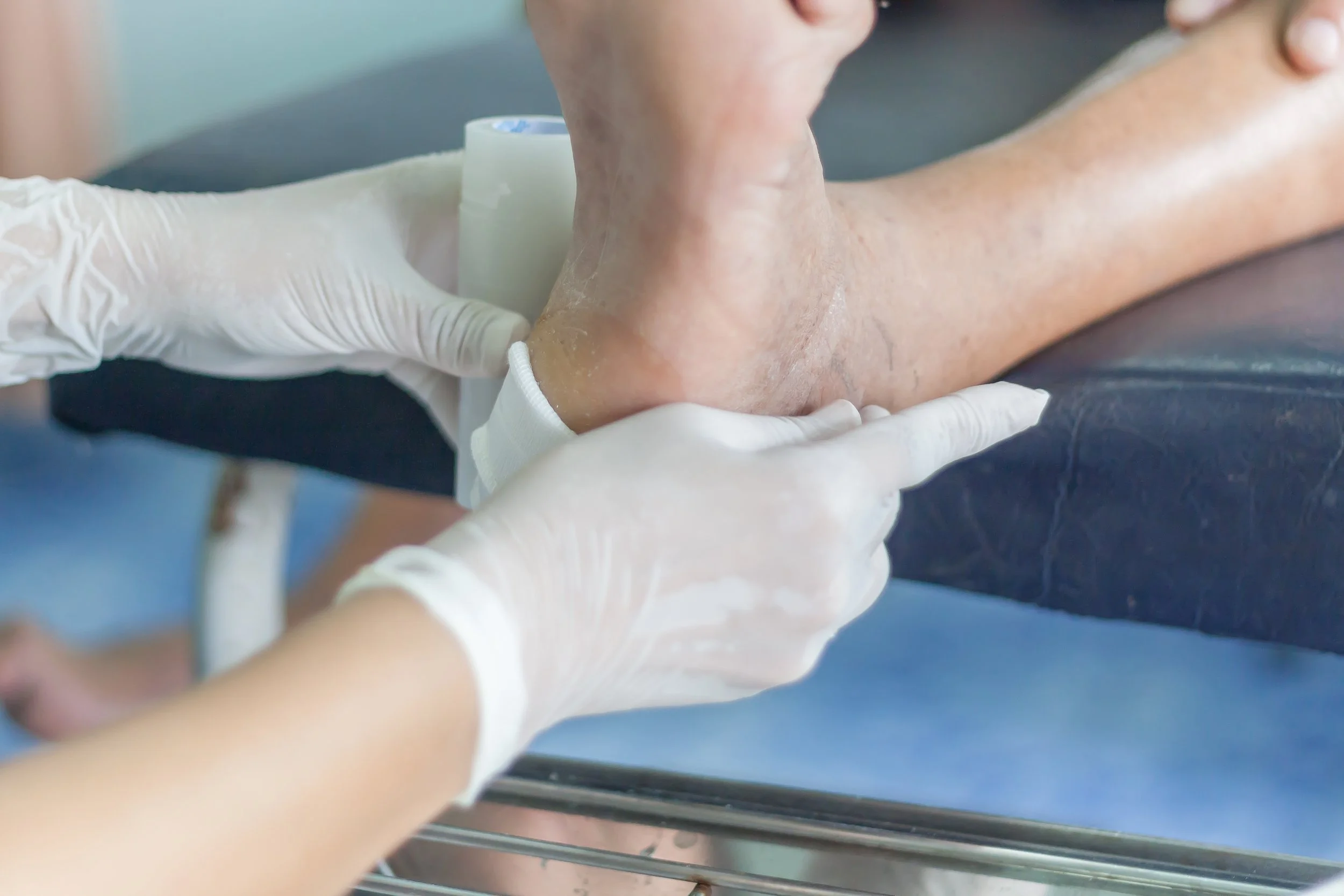Wound Care
Diabetic foot refers to a range of complications that affect the feet of individuals with diabetes. Diabetes can lead to various problems with the feet due to long-term effects on blood circulation, nerve function (neuropathy), and the immune system. These complications can increase the risk of developing serious foot problems, including infections and ulcers, which, if left untreated, can lead to amputation.
It's important for individuals with diabetes to monitor their feet regularly for any signs of complications and to seek prompt medical attention if they notice any abnormalities or develop foot problems. Proper foot care, including regular inspection, keeping the feet clean and moisturized, wearing well-fitting shoes, and maintaining good blood sugar control, can help reduce the risk of diabetic foot complications.
Symptoms
Peripheral Vascular Disease
Diabetes leads to changes in the blood vessels, including both veins and arteries. PVD is a disorder that causes blood vessels to narrow, block or spasm. Reduced blood flow can lead to pain and fatigue in your legs, and any injury will take longer to heal. If proper foot care is not carried out, ulcers can develop and wounds may get infected, which could lead to the loss of the whole or part of a limb.
In order to minimise your risk for diabetic foot problems, adequate foot care should be taken. Minimise the risk of long term damage to your health and seek professional help immediately if any of the symptoms occur.
Diabetic Foot
Numbness or Tingling Sensation: Neuropathy can cause a loss of sensation or abnormal sensations such as tingling, burning, or prickling in the feet and toes. This can make it difficult to detect injuries or ulcers.
Foot Pain or Discomfort: Some individuals with diabetic foot may experience pain or discomfort, which can range from mild to severe. Pain may be constant or intermittent.
Changes in Skin Color or Texture: Skin on the feet may appear dry, cracked, or scaly. It may also become shiny or glossy. Changes in skin color, such as redness or bluish discoloration, may also occur.
Foot Ulcers: Open sores or wounds, known as foot ulcers, can develop on the bottom of the feet, toes, or other areas. These ulcers may be painless due to neuropathy, but they are prone to infection and slow to heal.
Infections: Diabetic foot ulcers are susceptible to bacterial infections, which can cause redness, warmth, swelling, and increased pain. In severe cases, infections can spread to the bone (osteomyelitis) or lead to systemic infections like cellulitis or sepsis.
Foot Deformities: Chronic nerve damage and changes in the structure of the foot can lead to deformities such as hammertoes, Charcot foot (a condition characterized by weakening and collapse of the foot arch), or claw toes.
Poor Wound Healing: Diabetes can impair the body's ability to heal wounds, leading to slow or non-healing ulcers and an increased risk of complications.
Gangrene: In severe cases of diabetic foot, reduced blood flow and untreated infections can lead to tissue death (gangrene), which may necessitate amputation of the affected toe, foot, or lower limb.
Diabetic Neuropathy
Diabetic Neuropathy occurs when high blood sugar (Glucose) levels damage nerves throughout the body, most often in the legs and feet. This can result in numbness, and the loss of sensation can make it difficult to feel any wounds that may occur and eventually get infected.

